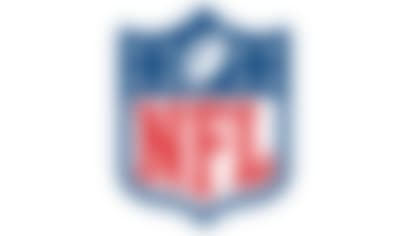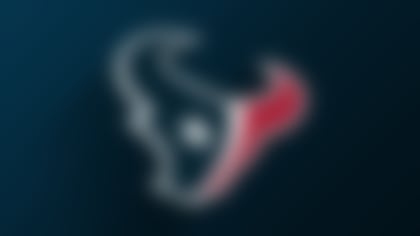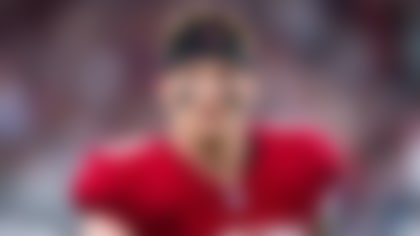INDIANAPOLIS -- The constant evolution -- or recycling -- of the NFL has generated an updated (or recycled) element into gauging the defensive back prospects for this year's draft. As well as wanting players with coverage ability and ball skills, coaches and personnel evaluators are also emphasizing open-field tackling. This goes for cornerbacks as well as safeties.
That can't be measured here at the NFL Scouting Combine when defensive backs work out Tuesday. Film and scouting reports will let coaches know not only who is willing, but who is able to tackle in space. It's one of the most difficult aspects of football at any level, especially in this era of four- and five-receiver sets spread across the field.
Whether it's a diminutive slot receiver or a flexed tight end, defensive backs often have to make plays without any help in an attempt to minimize the trend of receivers catching the ball in space and breaking a tackle for extra yardage (a.k.a., yards after contact or YAC). A miss, and they're watching DeSean Jackson, Reggie Wayne or Andre Johnson take it to the house.
What's helping pro teams evaluate defensive backs in that regard: the spread offense.
With so many college teams running the pass-first system and spacing receivers out, defensive backs are being forced to make plays in coverage and after the ball is caught. Seeing how defenders react and execute is helping those in the NFL figure out which cornerbacks and safeties can handle themselves under similar circumstances at this level, where the game that has become more geometric.
"What we're seeing now is, because of the wide-open offenses and the increasing number of pass attempts at the college level, you get more opportunities to evaluate a cornerback," Tennessee Titans coach Jeff Fisher said. "You get to evaluate them in space, in man coverage, and as a zone player. But probably the most important thing is you get to evaluate them as an open-field tackler because you have these quick passing games and jail-break screens.
"It's easier to evaluate corners in the college game now than what it was, say 10 years ago."
The evaluation of this crop of defensive backs -- cornerbacks and safeties: good, not great. There aren't any defensive backs teams are clamoring for, except for maybe Tennessee safety Eric Berry and Florida cornerback Joe Haden. However, the depth is strong and there will be plenty of safeties and corners who can transition into the valued nickel back spot.
"You're always looking for guys who can tackle but every defensive back is going to miss in the open field from time to time," Falcons general manager Thomas Dimitroff said. "Some of the best tacklers are going to miss. I've seen Troy Polamalu, Bob Sanders and Ed Reed miss. They come back though. You hope you find the guy who can recover after a miss and that they don't miss again for a very long time.
"This year's upper echelon of corners is a very athletic group and these guys are very fast, which is good. Most of them are good in run support and are very good tacklers. As a whole, they're a well-rounded group."
Other than Haden, Boise State's Kyle Wilson, Florida State's Patrick Robinson, Rutgers' Devin McCourty and Oklahoma State's Perrish Cox are viewed as some of the better cornerback prospects.
In today's NFL, what applies to cornerbacks also applies to safeties. While safeties tend to be more physical tacklers, they have to be precise as well, like Indianapolis' Antoine Bethea. Safeties are now being singled out with more frequency as the guy offenses try to pick on in open space with flex tight ends, like the New York Jets' Dustin Keller, or with one of a multitude of receivers.
They get picked on because they're typically not as good in coverage as corners. So if they can't consistently make plays on the ball, they better make a tackle. With that in mind, teams are putting more emphasis on safeties who can cover instead of the traditional tack of having a free safety monitor things in the deep passing game and using a strong safety as a fourth linebacker.
Looking for a safety net
Teams are looking for more players like Troy Polamalu -- versatile safeties who can do it all. And there are some intriguing prospects available in this year's draft, writes Pat Kirwan.**More ...**
Besides that, having two safeties who can cover and tackle allows teams not to tip coverages or defensive schemes to offenses, which typically read safety alignment in determining pre-snap reads.
"You ideally want to have two safeties that are interchangeable," said Dimitroff, whose specialty when he was a scout, was evaluating defensive backs. "The 208-, 210-pound guy who can move around, come into the box and flip his hips; stay in coverage and make plays over the top is what you want. The days of the 225-pound, 230-pound safety who plays in the box seem like they're becoming more obsolete."
That philosophy doesn't mean teams will necessarily shy away from USC safety Taylor Mays, a 6-foot-3, 230-pound physical marvel. At the same time, he won't fit a lot of schemes because he hasn't shown to be as balanced a safety as some teams prefer. Mays is a traditional strong safety who routinely levels anyone with the ball on the run or after a catch.
Still, personnel evaluators from some teams said he doesn't track the ball well in the air or make plays on the ball, hence his five career interceptions -- one the past two seasons. Mays' physical attributes will appeal to a lot of teams, though. He can tackle with the best of them.
Yet, as much as teams are looking for defensive backs who can tackle, the clear preference is still for guys in the front seven to rack up the majority of the stops. When that doesn't happen, however, teams want the comfort of having another line of defense ready to make a stop.



